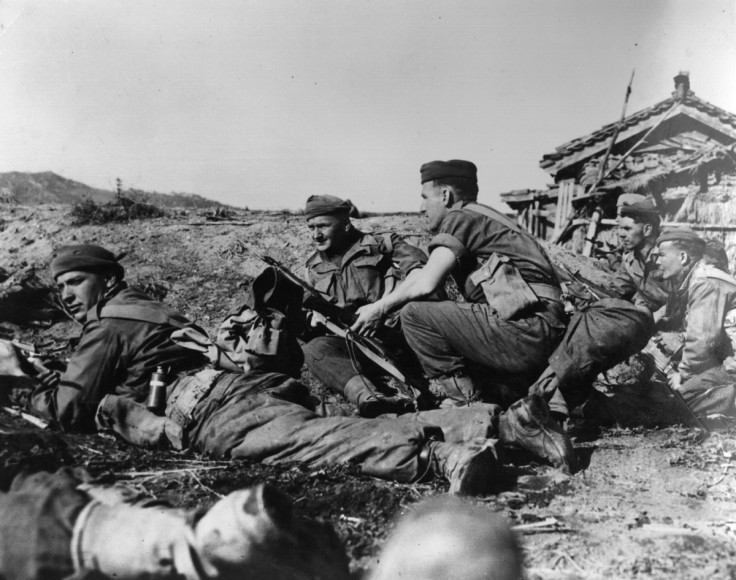Remembrance Day 2015: Ten facts about the Korean War, Britain's forgotten conflict
British forces were involved in the first major conflict to break out after the end of the Second World War

It has been referred to down the years as the "Forgotten War". But we still feel ramifications of the Korean War in the early 1950s. Though exchange of fire ceased under an armistice, it is technically not over, and both North and South Korea remain on a tense war footing as a result.
British forces were among those involved in the first major conflict to break out after the end of the Second World War in 1945. Gunfire on the Korean Peninsula signalled the beginning of the Cold War and a new era of conflict. To coincide with Remembrance Day on 11 November, here are ten facts about the Korean War.
1. Around 100,000 British service personnel from across the Commonwealth were deployed in the Korean War, which is about a tenth of all the forces involved on the United Nations' side.
2. It lasted for three years, from June 1950 to July 1953, after the communist North Korea, backed by the Soviet Union and China, invaded South Korea, which was supported by United Nations forces led by the US.
3. Korea was the first military conflict of the Cold War, an ideological stand-off between the capitalist West and the Soviet Union, often fought through proxy wars, which would last until the fall of the Berlin Wall in November 1989.
4. There were 1,078 British troops killed in action, 2,674 wounded and 1,060 missing or taken prisoner.
5. There is just one permanent memorial in London to those who died in Korea, found outside the Ministry of Defence in Westminster - and it was only unveiled in 2014.

6. The Korean demilitarized zone was established when the armistice was signed, which separates the borders of the two countries, and is still in place. You can visit from the South.
7.There are four names for the war and what you call it depends on where you live. In the West, it is known as the Korean War. In North Korea, the Fatherland Liberation War. In China, the War to Resist US Aggression and Aid Korea. And in South Korea, it is called the 6-2-5 Upheaval, named for the day on which it started - June 25, 1950.
8. Death tolls vary, but according to The Korean War: A History by Bruce Cumings, as many as five million soldiers and civilians were killed.
9. One of Chairman Mao's sons, Mao Anying, was killed while fighting for China in the Korean War. A veteran of the Russian Red Army, for which he fought against the Germans in Poland, Anying was 28 and died in an air strike in North Korea.
10. Almost all of a British unit - the 1st Battalion, the Gloucestershire Regiment - were killed or captured at the Battle of Imjin River. Around 650 "Glosters" were deployed along with UN forces to face down a push by 10,000 Chinese soldiers. The Glosters were eventually surrounded on Hill 235. While their actions helped fend of the Chinese advance, 622 were killed, wounded or captured during the fierce battle, which has become an important part of British military history.
Correction: Number 5 originally said there was only one permanent memorial in Britain. In fact, there is only one in London. Another permanent memorial was unveiled in Bathgate Hills, West Lothian, in 2013. The article has been updated.
© Copyright IBTimes 2025. All rights reserved.






















